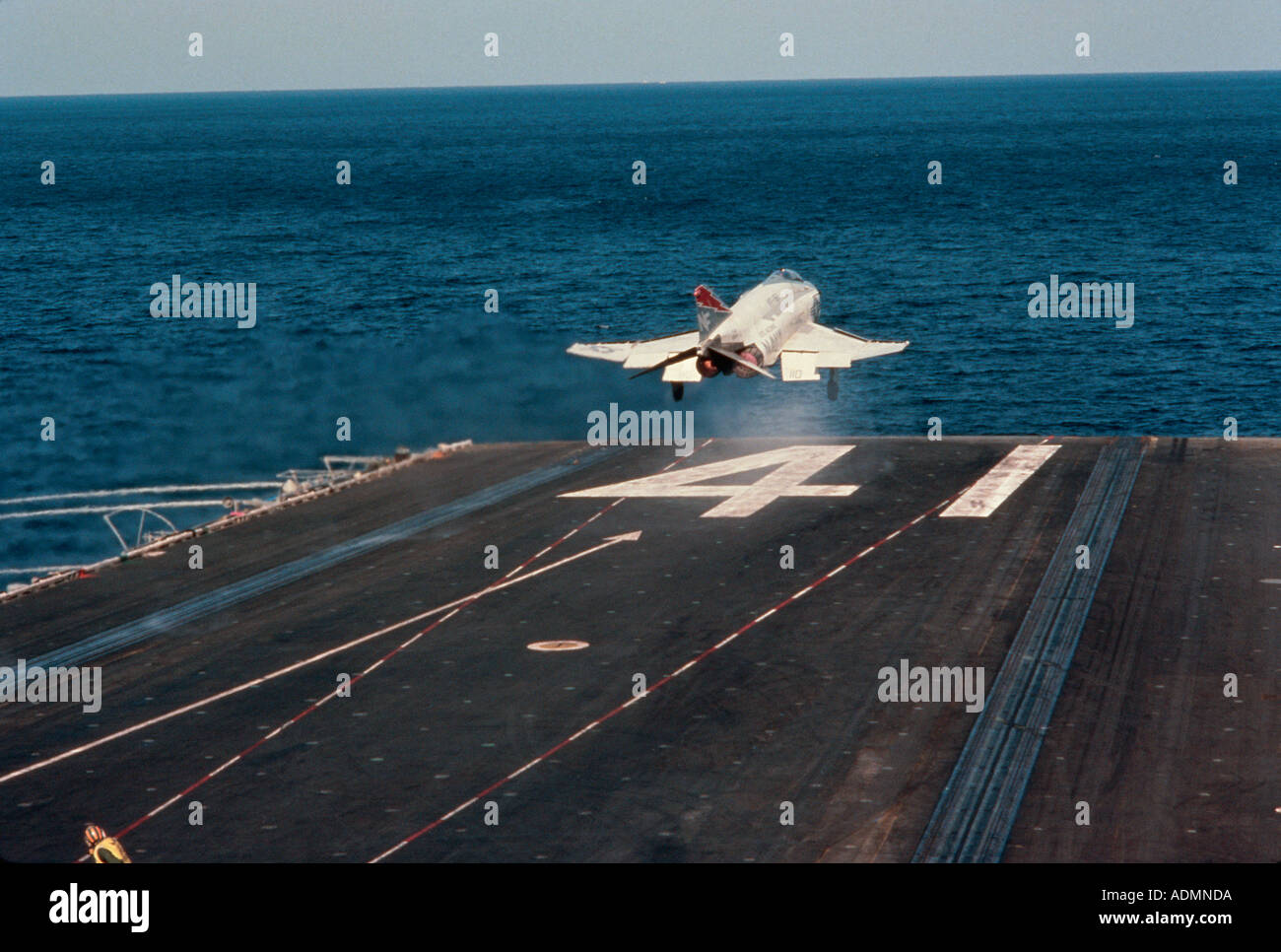Jet Take Off Aircraft Carrier - Carrier-based aircraft, sometimes known as carrier-capable aircraft or carrier-borne aircraft, are naval aircraft designed to operate from aircraft carriers. He must be able to launch short distances and withstand the sudden force of his launch and recovery from the pitching deck. In addition, the wings can be folded quickly, facilitating operation in tight spaces.
The aircraft is designed for various purposes including air-to-air combat, surface attack, anti-submarine warfare (ASW), search and rescue (SAR), transport (COD), weather observation, reconnaissance and airborne early warning and control (AEW&C ). ) completed ) obligation.
Jet Take Off Aircraft Carrier

The term generally applies only to fixed-wing aircraft, as naval helicopters can operate from a variety of ships, including helicopter carriers, destroyers, frigates, and container ships.
U.s. Navy Lands Fighter Jet On Aircraft Carrier Via Remote Control
The 1903 advertisement for fixed-wing aircraft was followed in 1910 by the first flight of an aircraft from the deck of a moored warship (the USS Birmingham of the United States Navy) and, in 1912, by the first flight of an aircraft from the deck. . A warship is underway (Royal Navy HMS Hibernia). Seaplanes and tugboats supporting ships, such as HMS Godin, followed. This evolution was well underway in the early 1920s, producing ships such as HMS Argus (1918), Hōshō (1922), USS Langley (1922), and Béarn (1927). With this development, the need for special aircraft adapted for take-off and landing from the ship's flight deck was recognized.
Air power grew in importance during the war, driven by the increased number, carrying capacity, and effectiveness of carrier-launched aircraft, until its importance became negligible during World War II, including the sinking of Prince of Wales and Repulse, despite the loss of many battleships. Go, the Battle of Taranto, the attack on Pearl Harbor and many other events. After the war, the carrier's operations continued to grow in size and importance.
Modern carrier-based aircraft are mainly produced in three different versions to suit the needs of various users. The following terms are used by the US Navy.
Catobar: A system used to launch and recover aircraft from the deck of an aircraft carrier. In this technique, an aircraft is launched using a catapult-assisted takeoff and lands on a ship with an arresting cable. Although this system is more expensive than the alternative method, it gives more flexibility in the operator's operation, since it allows the aircraft to operate with more payloads. Ship with CATOBAR to USA. The Nimitz class included,
Macron Kicks Off French Race To Build A New Nuclear Powered Aircraft Carrier
The use of catapults allows aircraft operators to launch large fixed-wing aircraft. For example, the US Navy launches the E-2 Hawkeye AEW aircraft and the C-2A Greyhound cargo aircraft with catapults.
STOVL take-off is done with "ski-jumps" instead of catapults. Using STOVL allows aircraft to carry larger payloads than when using VTOL, usually avoiding the complexity of a catapult. The most famous example is the Hawker Siddeley Harrier jump jet,
Although it can take VTOL, it is usually operated as a STOVL aircraft to add fuel and weapons.

STOBAR A system used to launch and recover aircraft from groups of aircraft carriers, consisting of two components STOVL and CATOBAR. Launch the plane under its own power using a ski-jump to help take off (without using a catapult). Although this requires arresting cables to enter conventional aircraft and ships. Kuznetsov-class aircraft carriers of the Russian Navy and People's Liberation Army Navy operate the Su-33 (Russia) and J-15 (China) as STOBAR aircraft. Others include India's Vikramaditya and Vikrant; Both will operate the MiG-29.
Aircraft Carrier Jet Takeoff Military Wallpaper
Before World War II, the weight of most aircraft allowed to start from the aircraft carrier under its own power, but needed help to stop. Catapults were installed but were only used when the ship was stationary or enough air on deck could not be provided by sailing into the wind. Large Eve aircraft such as the North American B-25 Mitchell were launched this way. This was possible because the ship's speed in the lightest of winds, combined with the low take-off speed, allowed the early aircraft to achieve very short flying speeds. The most extreme version of this was the battleship platform used in the 1920s where World War I biplane fighters such as the Sopwith Camel were launched from just a few dozen feet above the battleship's forward gun turret.
Conventional aircraft, such as the Curtiss P-40 Warhawk, Republic P-47 Thunderbolt, Supermarine Spitfire, and Hawker Hurricane, are often sent to foreign air bases by aircraft carriers. They will be loaded by crane onto an aircraft carrier in port, launched under their own power from a carrier at sea near their destination, and landed on land at a cold airfield. This is not usually a combat mission but in some cases it provides air cover for an aircraft that is launched and the aircraft cannot be recovered by the carrier.
Some STOL aircraft, such as the North American Rockwell OV-10 Bronco, are operated in this manner from aircraft carriers and amphibious assault ships, but this is not common.
Large aircraft such as the Lockheed C-130 Hercules have successfully landed and launched from large aircraft carriers, but with no cargo and little fuel.
The Future Of The Aircraft Carrier
Aircraft carrier jet takeoff, fighter jet take off from aircraft carrier, jet taking off aircraft carrier, first jet landing on aircraft carrier, aircraft carrier, aircraft carrier jet blast deflector, take off from aircraft carrier, aircraft carrier museum ships, jet landing on aircraft carrier video, jumping off aircraft carrier, a fighter jet is launched from an aircraft carrier, jet landing on aircraft carrier
0 Comments